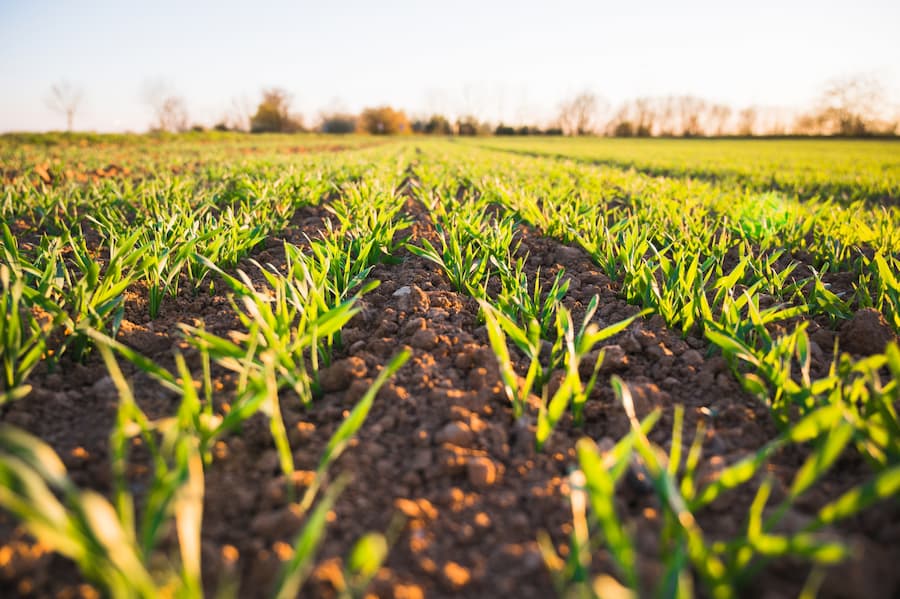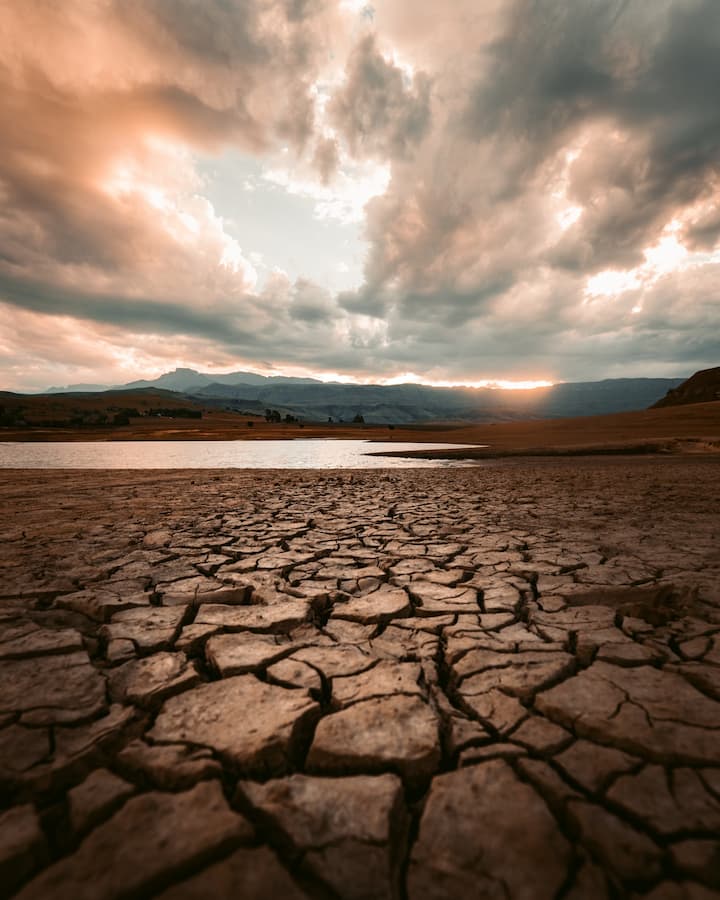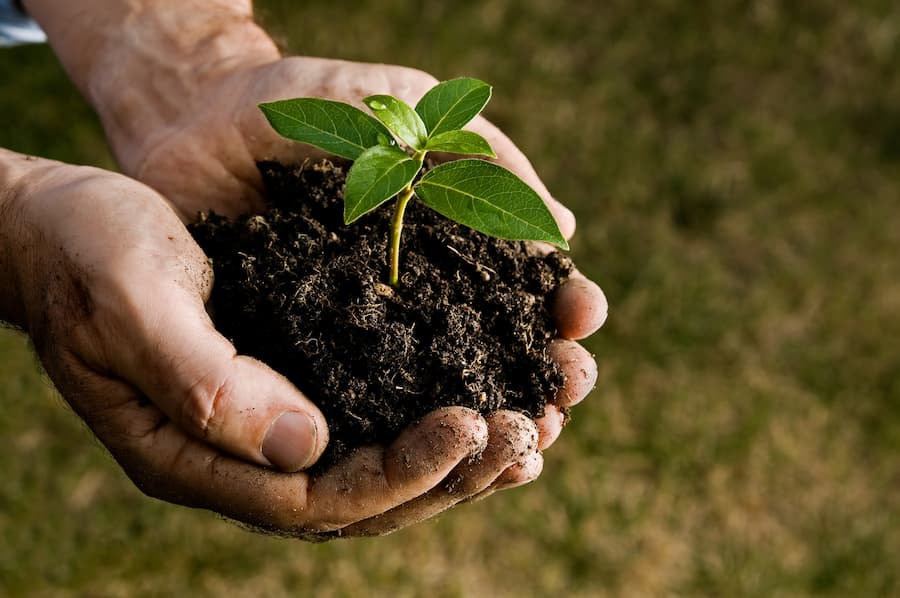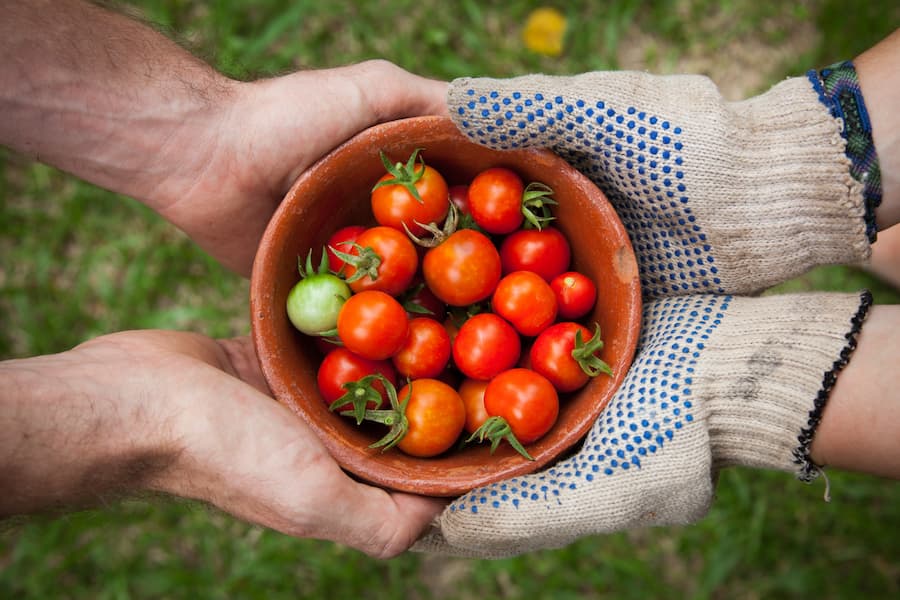Climate Change Effects on Agriculture
Climate change will have many effects on agriculture which will be felt around the world.
Agriculture is greatly dependent on climatic conditions. And therefore changes in climate has a considerable impact on agricultural production.
“Climate change affects agriculture in a number of ways, including through changes in average temperatures, rainfall, and climate extremes (e.g., heat waves); changes in pests and diseases; changes in atmospheric carbon dioxide and ground-level ozone concentrations; changes in the nutritional quality of some foods; and changes in sea level” (Source).
As per an article from Soil Science Society of America “Continued changes in the frequency and intensity of precipitation, heat waves, and other extreme events are likely in the future; all of these will impact agricultural production.” (Source).
The reality is that the effects on agriculture will affect billions of people around the globe.
Land Degradation
Climate change is leading to a very high rate of land degradation, desertification and nutrient-deficient soils. It will therefore have many effects on agriculture.
As per UNCCD (United Nations Convention to Combat Desertification) “every year 75 billion tons of fertile soil is lost to land degradation. Similarly 12 million hectares of land are lost every year to desertification and drought alone. This is an area that could produce 20 million tons of grain” (Source).
As per a report published by United Nations Environment Program “more than 500 million hectares of farmland – an area more than half the size of China – have been completely abandoned due to drought, desertification and land mismanagement” (Source).
Rising Food Insecurity
In the year 2015, the member countries of the United Nations adopted the 2030 Agenda for Sustainable Development; one of the major areas of focus for the FAO was to strive for zero hunger by the year 2030 (Source).
As per a report by FAO, “close to 750 million – or nearly one in ten people in the world – were exposed to severe levels of food insecurity,” and “an estimated 2 billion people in the world did not have regular access to safe, nutritious and sufficient food” in the year 2019 (Source).
The same report has noted that “The world is not on track to achieve Zero Hunger by 2030. If recent trends continue, the number of people affected by hunger would surpass 840 million by 2030” (Source).
The impact of climate change on agricultural production will directly impact all four dimensions of food security:
Availability:
- “Global mean crop yields of rice, maize and wheat projected to decrease 3–10 percent per degree of global warming” (Source)
- “Impacts on livestock through reduced feed quantity/quality, pest and disease prevalence, physical stress; meat, egg and milk yield and quality decrease” (Source)
- “5–10 percent decrease in potential fish catch in tropical marine ecosystems” (Source)
Access:
- “Increasing food prices” (Source)
- “Relocation of production with impacts on prices, trade flows and food access” (Source)
Utilization:
- “Reduced food safety due to higher rates of microbial growth at increased temperatures” (Source)
- “Reduced nutritional quality of crops due to decreases in leaf and grain nitrogen, protein and macro- and micronutrient concentrations associated with increased carbon dioxide concentrations and more variable and warmer climate” (Source)
Stability:
- “Damage to crops and livelihoods from extreme events (heat waves, droughts, floods, storms, etc” (Source)
- “Short-term disruptions of trade through effects on transport systems” (Source)
Adapting to Climate Change
With so much at stake, an adaptation of agricultural practices to the changing climate is the need of the hour. This Adaptation will require a no. of steps such as “cost-effective investments in water infrastructure, emergency preparation for and response to extreme weather events, development of resilient crop varieties that tolerate temperature and precipitation stresses, and new or improved land use and management practices.” (Source).
A research article published on the topic “impact of climate change on agriculture” has pointed out multiple sustainable solutions for agriculture in the future, such as:
- “Developing resilient varieties of crops which can withstand abrupt stresses of temperature and precipitation, implementing biotic and sustainable agricultural methods” (Source).
- “Use of biofertilizers and biopesticides will result in decreased reliance on chemical fertilizers and pesticides. This will result in reduced emission of GHG and decrease in levels of soil, water and air pollution” (Source).
- “Change in crop cultivars, sowing time and cultivation techniques (such as mixed cropping systems) to provide greater durability to crops in extreme events should be taken into account” (Source).
- “Reclamation of marginal and degraded lands using resilient crops, by afforestation or by the use of beneficial soil microbes” (Source).
- “Extensive data collection and field trials to assess the impact of prevailing climatic conditions in different agro-ecological zones can help in designing future strategies through computational simulation” (Source).
- “Remote sensing and satellite imaging can also help in future predictions for the vulnerable agro-ecosystems and suggesting for the corrective measures by involving multi-disciplinary approach. This can also help in working out responses, preparedness and planning of managing the agro-ecosystems for extreme events such as water scarcity, heat waves, floods and so on” (Source).
- “Connecting and sensitizing farmers to sustainable technologies and activities is of utmost importance as they are the ones who can play a major role in implementation of the ecological goals” (Source).
- “Execution of policies and frameworks at global, national and regional levels is of paramount importance. For this we have to act in unification rather than make policies at state or national levels. International policies on climate change and agriculture are need of the hour but implementation has to be done at the ground level” (Source).
Climate-Smart Agriculture
The World Bank has defined Climate-smart agriculture (CSA) “as an integrated approach to managing landscapes—cropland, livestock, forests and fisheries--that address the interlinked challenges of food security and climate change. CSA aims to simultaneously achieve three outcomes” (Source):
- “Increased productivity: Produce more food to improve food and nutrition security and boost the incomes of 75 percent of the world’s poor that live in rural areas and mainly rely on agriculture for their livelihoods” (Source).
- “Enhanced resilience: Reduce vulnerability to drought, pests, disease and other shocks; and improve capacity to adapt and grow in the face of longer-term stresses like shortened seasons and erratic weather patterns” (Source).
- “Reduced emissions: Pursue lower emissions for each calorie or kilo of food produced, avoid deforestation from agriculture and identify ways to suck carbon out of the atmosphere” (Source).
New Initiatives
The Food and Agriculture Organization (FAO) has been actively promoting Climate Smart Agriculture (CSA) all around the globe (Source).
“Ministry of Environment, Land and Sea of Italy (IMELS) and FAO” has pledged their support to the Project “International Alliance on Climate-Smart Agriculture.” “As part of this project, IMELS supported FAO in hosting and implementing the Global Alliance for Climate-Smart Agriculture (GACSA), as a multi-stakeholder platform to foster learning, knowledge sharing, partnership building, dialogue and debate in the context of CSA” (Source).
Time to Mitigate Climate Change's Effects on Agriculture
Essentially, climate change will have numerous effects on agriculture as mentioned above. However, there are many ways in which we can adapt to these changes.
In general, it is important that we take action on climate change in order to reduce the effects of climate change. Basically, effects such as the increase in droughts and wildfires will directly effect agriculture. Also, there are many other effects of climate change that will impact humanity such as the rise of climate refugees, the increase in severe hurricanes, long-term desertification, ocean acidification, more wars over natural resources, and extinction of species.
Fortunately, there are many things you can do such as voting for climate-conscious politicians, buying eco-friendly products, driving an electric car, using public transit, recycling, composting, and planting trees.
Together, we can help stop climate change. Whether we believe in climate science or not, we will feel the effects such as the increase in food prices. One way for Americans to take action is to install solar panels on their homes but this is just one example.
Further Reading and Sources
- Wikipedia: Climate change and agriculture
- Soil Science Society of America: How will Climate change Affect Agriculture?
- The United Nations Decade for Deserts (2010-2020) and the fight against Desertification
- United Nations Environment Program: High and Dry
- FAO: Food and Agriculture in the 2030 Agenda
- FAO: The state of food security and nutrition in the world
- FAO: Agricultural trade, Climate change and Food security
- Impact of climate change on agriculture production and its sustainable solutions
- Worldbank: Climate smart agriculture
- FAO: Climate Change and Agriculture
Join the Community and Newsletter (4500 Subscribers)
You can subscribe to my Substack Page or see the archives of previous posts. More great content coming soon!
Recent Articles
-
Quotes on Climate Change
Nov 24, 25 07:29 PM
Here is a list of quotes on climate change divided into different categories, many of which include people you have previously heard of. -
Climate Change Guide
May 09, 25 08:36 PM
The Climate Change Guide is your guide to a more sustainable future, and will provide you with all relevant information on mankind's greatest challenge. -
Laurent Cousineau
May 09, 25 08:23 PM
Here is information about the founder of the website Climate Change Guide, Laurent Cousineau. He created it in August 2011. -
Climate Change Quotes by Scientists Around the World
Aug 24, 24 02:01 PM
Explore impactful climate change quotes by scientists. Discover the wisdom and insights of experts advocating for a sustainable future.










